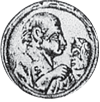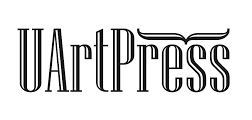Nemzedéki önértelmezések a 80-as évek magyar színházában: Színházi formakísérletek Kornis Mihály „Kozma” című színművének előadásaiban
Keywords:
Mihály Kornis, Pesti SzínházAbstract
Generational Self-Definition in the Hungarian Theatre in 1980s: Theatrical Functional Trial in Several Performances in Kornis Mihály’s “Kozma” Drama
The lecture is about Kornis Mihály’s less known drama with the title “Kozma” directed by Ács János (1986, Kaposvár) and Horvai István (1988, Pesti Színház). For the reconstruction of the play I used the creator’s declarations, photos, criticism, play recordings. Kornis’s third drama takes place in the 1980’s at Lake Balaton on the beach of a closed holiday resort, where three old women enjoy themselves in the heat, when on the effect of a mysterious person named Kozma “coming from above” they begin to confess their secrets. The women’s relatives were men working for the government. Their confessions and their lives are closely related to the previous three decades’ historical events. A scene becomes a common place for the one -dimensional peaceful phenomena and its victims tensioned world. The ones suffering innocently die “in one minute” round the three women who seem to belong to the privileged stratum. The play ends with wild dancing, which can be interpreted as reconciliation or a penalty dance. The drama “Kozma” had a summarizing function in the contemporary dramaturgy. In a reference or partly contains every characteristic and the important historical events of the age presented in the play (1956, 1968 Prague). It can be regarded as a national self-definition, the common experience of the Hungarian playwrights. It should be mentioned the effect of Pilinszky’s “Síremlék” (“Tombstone”) -dramaturgy, which in Hungarian literature created in a unique way the silence of the postwar anxiety (“Gyerekek és katonák”, “Kids and Soldiers”, Pécs, 1981). The premiere in Kaposvár bonus that Ács and Kornis belonged to the same generation and they aimed a valid theatrical presentation without any political tendency. Ács and Horvai directed in a stylized, sensitive way the different layers of the play that is not without mistakes. One of the main strengths of Kozma is the uncertainty in action, their interpretation and the dialogues. Kornis leaves the reason of actions in shadow: the events are questioned. Characters of Kozma do not realize their fate, their mistakes and the fact that they are victims; they hold their burdens alone. This solitude is expressed on the stage with spectacular pantomime and silences. The author emphasizes the tragic situation with the emphasized lack of it. Kornis thought that the beach resembling a lager is “a metaphor with big endurance” that can authenticate every happening. The old women’s naked sunbathing is a metaphor as well, the metaphor of coziness, the “consciousness of possessing”. The human load of the truck is another metaphor. One of the main questions of the play was the problem of nudity on stage which was a problem of the age. (Characters of the women was characterized by the color and pattern of their swimming suits.) The stage-designer decided to solve the problem by signaling. The reality of the abstract space was given by things used on the shores. The background or the foreground was activated with the means of proper changes and movements – during the activity of one of these the other side’s characters were present as lifeless nature. It is an important contribution to the evaluation of the performance that the social atmosphere around the premiere in 1986 in Kaposvár and the one in Budapest in 1988 changed as well, the play rewritten to the second premiere became a play with much clearer structure and the premiere in Budapest could show better the symbolic-metaphoric layers of the drama.
References
BÉCSY, Tamás, 1986. Lehet-e még drámát írni? Színház. 8. 1–11.
BOGÁCSI, Erzsébet, 1988. Fentről jött látogató, in Magyar Nemzet, 02.22. 4.
EÖRSI, László, 2013. Megbombáztuk Kaposvárt. Bp.: Napvilág 1956-os Intézet Alapítvány.
FORGÁCH, András, 2015. A hír hallatán meglett férfiak zokogtak az utcán. [online] Librarius Könyvesbolt. [Letöltés időpontja: 2016.08.15.] Elérhető: http://librarius.hu/2015/08/29/a-hir-hallatan-meglett-ferfiak-zokogtak-az-utcan-elhangzott-acs-janos-temetesen/
FÖLDES, Anna, 1988. Élethazugságaink igazsága. Színház. no. 7. 6.
FÖLDES, Anna, 1999. Közös bűneink színpada. Criticai lapok, 10.
Interjú BÉRCZES Lászlóval, 1986. In: Színről színre. Petőfi Rádió, 1986. február 8. [gépirat] Lelőhely: Országos Színháztörténeti Múzeum és Intézet Könyvtár és Cikkarchívum
KINTLI, Borbála, 2015. A csillagok mozgásának esztétikája – Pilinszky János színháza. In: Az Esztétika – Mi végre? című konferencia előadásai. [Letöltés időpontja: 2016.08.14.] Elérhető: http://emvkonferencia.blog.hu/2015/04/27/kintli_borbala_a_csillagok_mozgasanak_esztetikaja_pilinszky_janos_szinhaza.
KOLTAI, Tamás, 1992. Kozmára várva. In: Színről színre. Budapest: Meszprint Kft. 72-74.
KORNIS, Mihály, 2003. A meztelen igazság. Premier. 2003.06. no. 5, 30.
KORNIS, Mihály, 1987. Beszéd a beszédről, részletek. Élet és Irodalom, január 17.
KORNIS, Mihály, 1988. Kozma. Pesti Színház. 02.11. [Műsorfüzet] OSZMI Színlaptár/Gyn. 1341.
Kozma, Kornis Mihály, 1986. Csiky Gergely Színház. Rendező: Ács János. [Bemutató: 1986. március 21.] [Ács János – rendező, Máté Gábor - Kozma] Szövegkönyv (súgópéldány). Lelőhely: Csiky Gergely Színház.
KORNIS, Mihály, 1999. Kozma. In: Drámák. Bp.: Magvető, 349–414.
KORNIS, Mihály és ÁCS, János, 1986a. Kozma. A tragédia áldozatainak csoportja: Gecse Joli, Karácsony Tamás, Gőz István, Magyar Tivadar, Dunai Károly, Kristóf Kata, Tóth Géza, Hunyadkürti György, Kósa Béla, Czakó Klára. [Jelenetfotók] Kaposvár: Csiky Gergely Színház. [Rendező: Ács János] Lelőhely: Csiky Gergely Színház Fotóarchívuma
KORNIS, Mihály és ÁCS, János, 1986b. Kozma. Molnár Piroska (Böbe), Pogány Judit (Hédi) és Varga Mária (Csilla) [Jelenetfotók] Kaposvár: Csiky Gergely Színház. [Rendező: Ács János] Lelőhely: Csiky Gergely Színház Fotóarchívumak
KORNIS, Mihály és HORVAI, István, 1988. Kozma. [Videofelvétel] [VHS] Budapest: Pesti Színház. [Rendező: Horvai István]. Lelőhely: Országos Színháztörténeti Múzeum és Intézet Audiovizuális Archívuma.
KOVÁCS Dezső, 1986. A tragédia kezdete és vége. Színház, no. 7. 2–4.
MACZÁK, Ibolya, 2015. Papírdarabok. Pilinszky János drámaírói munkássága 2013, Budapest: Balassi Kiadó, 172.
MÉLYKUTI Ilona riportja, 1985. In: Láttuk, hallottuk… Petőfi Rádió, 1985. december 30. [gépirat] Lelőhely: Országos Színháztörténeti Múzeum és Intézet Könyvtár és Cikkarchívum
NÁNAY, István, 2015. Nem tudok meglenni színház nélkül. Színház, szeptember. 13-14.
RADNÓTI, Zsuzsa, 1984. Ki vagy te. Kornis Mihály drámáiról. Jelenkor, 27. évf., 10. 876–880.
RÓNA, Katalin, 1986. Kozma. Film Színház Muzsika, szeptember 27.
SÁNDOR L. István, 2015. Mi marad egy rendező után? [online] Ellenfény, július 27. [Letöltés időpontja: 2016.08.10.] Elérhető: http://www.ellenfeny.hu/index.php/fokuszban/multidezo/4332-acs-janos
SIMON Márta kaposvári riportja, 1986. In: Színről színre. Petőfi Rádió, 1986. február 8. [gépirat] Lelőhely: Országos Színháztörténeti Múzeum és Intézet Könyvtár és Cikkarchívum
TARJÁN, Tamás, 1988. Kihantolás. Népszabadság, február 23.
VARGA István, 1986. Összefoglalás, ha igaz. Somogyi Néplap, március 26. 5.
Downloads
Published
How to Cite
Issue
Section
License

This work is licensed under a Creative Commons Attribution 4.0 International License.
CC-BY permits any use, reproduction, distribution, self-archiving and citation of the work as long as the authors are credited. The complete bibliographical data of Symbolon Journal must also be indicated, which you can find in the How to cite section on this page. If possible, please also place a link leading to the original publication.
Copyright of the paper belongs to the author(s).




